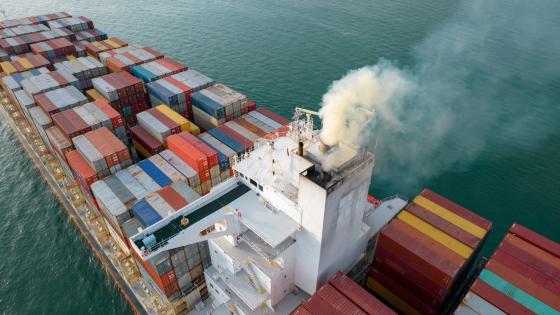One of the most notable phenomena in the world economy over the past 20 years has been the enormous growth in the number of international economic integration agreements (EIAs). Of the roughly 300 agreements that exist or have been notified to the GATT/WTO since 1947, about half have been notified in the last 15 years.
The proliferation of such agreements might suggest that policymakers have anticipated large trade and economic output effects from such agreements. Yet, before any agreement is signed, computable general equilibrium (CGE) models are employed typically to assess in advance the potential trade and output impacts of such agreements. Such estimated effects are typically small as a percentage of existing trade and GDP (DeRosa and Gilbert, 2005). Moreover, such ex ante models cannot assess ex post what actually did happen.
Recent empirical research has tried to provide more precise assessment of the effects of economic integration agreements on members’ international trade, which can help ultimately to assess effects on economic output and welfare. The research suggests that ex post empirical (partial) estimates of free trade agreements in general, as well as European economic integration agreements specifically, have been considerably underestimated, and appear many times larger than the effects predicted by ex ante CGE models and traditional empirical analyses. The main source of the underestimation of empirical estimates appears to be related to researchers ignoring that national governments self-select into such agreements (which creates an endogeneity bias).
What determines trade with and without an EIA?
When a pair of countries enters into an economic integration agreement – such as France and Germany in the original EEC in 1958 – the elimination of trade barriers causes the relative price of trade between France and Germany to fall, tending to increase their bilateral trade; this is the “partial” (or direct) effect of the EEC on trade. However, this barrier reduction also lowers the overall (or multilateral) resistance to trade in each country relative to the rest-of-the-world; this subsequent “general equilibrium” (or indirect) effect raises the effective relative price of France-Germany bilateral trade, tending to reduce the flow and (in most cases) partially offset the direct effect.
Estimating (ex post) the effect of the EEC on bilateral trade is not a trivial exercise. This requires calculating a plausible counterfactual. For instance, before 1958 we can measure the level of France-Germany bilateral trade without the EEC, but we cannot observe what it would have been had the EEC existed. Similarly, we know what France-Germany bilateral trade was each year after 1957 with the EEC, but we cannot observe what it would have been had the EEC not existed.
Fortunately, empirical researchers of these effects benefit from a 50-year literature explaining actual bilateral trade flows between pairs of countries. The “gravity equation” literature explains variation among pairs of countries’ trade flows using economic variables in the exporting country (say, Germany’s GDP and multilateral resistance), in the importing country (say, France’s GDP and multilateral resistance), and important variables affecting trade bilaterally (say, bilateral distance and other trade costs). (Anderson and van Wincoop, 2004; Baier and Bergstrand, 2006, 2007; Baldwin and Taglioni, 2007). Traditionally, economists have included a “dummy variable” (in cross-sectional regressions) to capture the differences between country pairs with an EIA versus without an EIA to estimate the “effect” of an EIA on trade (i.e., the difference between the actual and the proposed counterfactual).
What types of countries choose to form EIAs?
The problem is that historically these estimated ex post effects have not only been small – they have even been negative! Such counterintuitive estimates are puzzling. However, one reason to think that these estimates are biased downward is that countries choose (or select into) EIAs. With 200 countries in the world, implying 19,900 (= 200 x 199/2) potential bilateral agreements, national governments have effectively formed a “market” for regionalism. Pairs of governments likely select into such agreements when their paired economic characteristics are such that their producers and consumers would likely benefit on net from such an agreement. However, a problem consequently arises when then estimating the effect of an EIA on the trade of a pair of countries. Baier and Bergstrand (2004) show that factors that often explain bilateral trade flows – such as GDPs and bilateral distance – also explain systematically the probability of an EIA; hence, the “market” for EIAs is influenced by similar factors to the market for trade flows. If factors that explain trade flows are unobservable to the researcher and also influence EIAs, then empirical estimates of the effects of EIAs on trade flows will be biased. However, if these unobservable factors change slowly over time, then they may be unrelated to changes in trade flows. The latter reasoning suggests that panel methods may help considerably to remove this self-selection bias.
Findings
Baier and Bergstrand (2007) provide evidence of the (partial) effect of the typical EIA on members’ trade accounting for self-selection of governments into such agreements. They find that, on average, an EIA basically doubles trade of members after 10-15 years. This takes into account that most EIAs are phased in over 5-10 years and the lagged terms-of-trade effects on trade flows.
Baier, Bergstrand, Egger and McLaughlin (2008) present evidence showing that – after accounting for all bilateral and multilateral price changes – estimates of the (partial) effect of the EU on members’ trade was larger than in traditional gravity equations and larger than the average effect just noted. According to this work, the EU increased members’ trade by 127-146 % after 10-15 years. Membership in the European Free Trade Association (EFTA) raised trade only 35 %, similar to the effect of membership in the European Economic Area (EEA). Moreover, Baier and Bergstrand (2006) demonstrate that – when computing the full general-equilibrium comparative static effects for economically large members of the EU – the multilateral resistance terms do not change much, causing little offset to the partial effects.
Policy Implications
Ex post empirical analysis of international economic integration agreements – such as the EU – suggests a considerably larger effect of such agreements on members’ trade than typical ex ante CGE models and traditional cross-section empirical analyses (using traditional “gravity equations”). These larger estimated effects are more consistent with the active role of national governments in pursuing economic integration agreements and the proliferation of such agreements in the “market for regionalism” that has surfaced over the past 15 years. Such estimates also suggest that the role of liberalising international trade policies may have a potentially larger effect on economic growth and welfare than previously thought. However, ex post empirical analysis of the direct links from economic integration agreements to economic growth – after accounting properly for the roles of institutions and geography – is still in its infancy.
References
Anderson, James E., and Eric van Wincoop, 2004. “Trade Costs,” Journal of Economic Literature, 62 (3), 691-751 (September).
Baier, Scott L., and Jeffrey H. Bergstrand, 2004. “Economic Determinants of Free Trade Agreements,” Journal of International Economics 64 (1), 29-63 (October).
Baier, Scott L., and Jeffrey H. Bergstrand, 2006. “Bonus Vetus OLS: A Simple Approach to Addressing the ‘Border Puzzle’ and Other Gravity-Equation Issues.” Manuscript (March).
Baier, Scott L., and Jeffrey H. Bergstrand, 2007. “Do Free Trade Agreements Actually Increase Members’ International Trade?” Journal of International Economics 71 (1), 72-95 (March).
Baier, Scott L., Jeffrey H. Bergstrand, Peter Egger, and Patrick McLaughlin, 2008. “Do Economic Integration Agreements Actually Work? Issues in Understanding the Causes and Consequences of the Growth of Regionalism,” The World Economy 31 (4), 461-497 (April).
Baldwin, Richard, and Daria Taglioni, 2007. “Trade Effects of the Euro: A Comparison of Estimators,” Journal of Economic Integration 22 (4), 780-818 (December).
DeRosa, Dean and John Gilbert, 2005. "Predicting Trade Expansion under FTAs and Multilateral Agreements," Peterson Institute Working Paper Series WP05-13.


